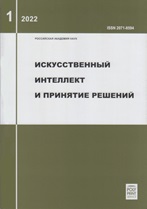|
Cognitive research and modeling
The fundamentals of development of cognitive graphic tools for evaluation of faculty performance
A. E. Yankovskayaab, D. Yu. Lyapunovcd
a Tomsk State University of Architecture and Building, Tomsk, Russia
b Tomsk State University, Tomsk, Russia
c Tomsk Polytechnic University, Tomsk, Russia
d Scientific Research Institute Automatics and Electromechanics, Tomsk, Russia
Abstract:
The paper substantiates the relevance of evaluation of faculty performance that is due to the faculty transition to an effective contract. The analysis of various approaches to faculty performance evaluation is given. The advisability of improving the methods of faculty testing is reasoned. Their performance evaluation based on cognitive graphic tools (CGT) is substantiated. The outlined fundamentals of CGT construction allow transforming the space of features into the space of patterns. A theorem for CGT construction based on a 2-simplex prism is given. This makes it possible to ensure the distances between the patterns constant as well as the ratios between these distances. The CGT were developed to evaluate the faculty performance: of similar structural subdivisions (e.g. departments) in accordance with the structure of the university; on the career path of a faculty member depending on the moments of testing; of similar subdivisions by types of activity (educational, managerial, scientific); on priorities path depending on the moments of testing, for example, annually. In the future perspective we propose to create an intelligent testing system with a cognitive component. Based on the analysis of the space of features we suggest its expansion allowing to improve the effective contract system.
Keywords:
intelligent testing system, matrix model of data and knowledge representation, regularities, cognitive graphic tools, 2-simplex prism, construction, intelligent instrumental software IMSLOG.
Citation:
A. E. Yankovskaya, D. Yu. Lyapunov, “The fundamentals of development of cognitive graphic tools for evaluation of faculty performance”, Artificial Intelligence and Decision Making, 2019, no. 3, 70–82
Linking options:
https://www.mathnet.ru/eng/iipr182 https://www.mathnet.ru/eng/iipr/y2019/i3/p70
|

|




 Contact us:
Contact us: Terms of Use
Terms of Use
 Registration to the website
Registration to the website Logotypes
Logotypes







 Citation in format
Citation in format 